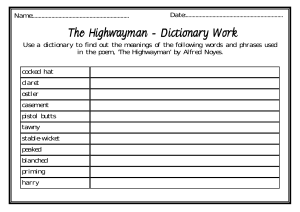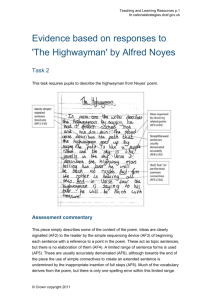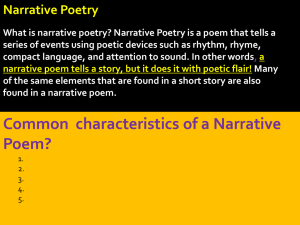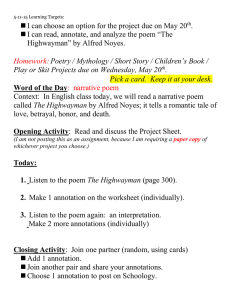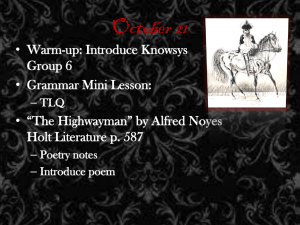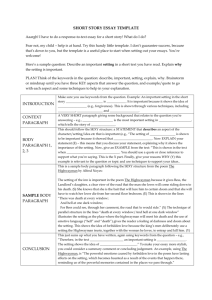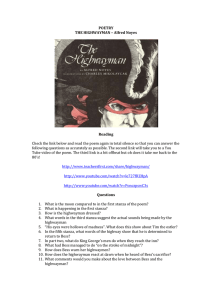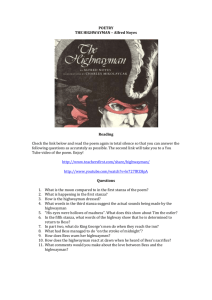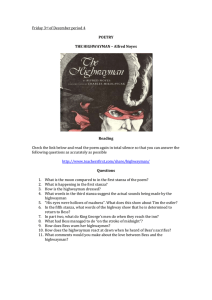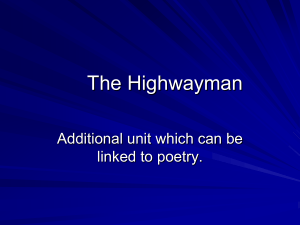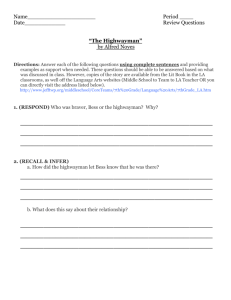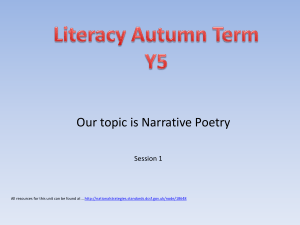The Highwayman
advertisement
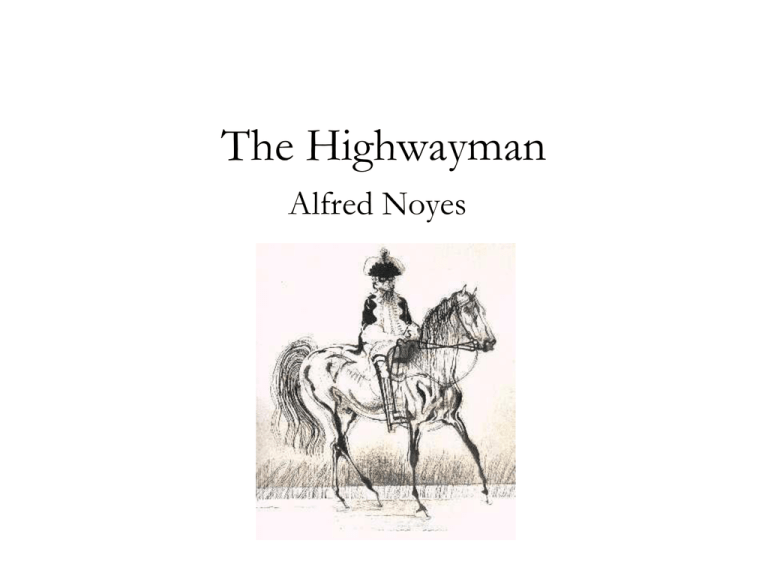
The Highwayman Alfred Noyes "The Highwayman" is a narrative poem written by Alfred Noyes, first published in the August 1906 issue of Blackwood's Magazine. The following year it was included in Noyes' collection, Forty Singing Seamen and Other Poems, becoming an immediate success. Plot The poem, set in 18th century England, tells the story of a nameless highwayman who is in love with Bess, a landlord's (innkeeper) daughter. Betrayed to the authorities by a jealous ostler (stableman), the highwayman escapes ambush when Bess sacrifices her life to warn him. Learning of her death he dies himself in a futile attempt at revenge, shot down on the highway. In the final stanza, the ghosts of the lovers meet again on winter nights. Background The poem was written on the edge of a desolate stretch of land in West Surrey known as Bagshot Heath, where Noyes, then aged twenty-four, had taken rooms in a cottage. In his autobiography, he recalled: "Bagshot Heath in those days was a wild bit of country, all heather and pinewoods. The Highwayman suggested itself to me one blustery night when the sound of the wind in the pines gave me the first line." The poem was completed in about two days. Literary Qualities • The poem makes effective use of vivid imagery for the background and of repetitious phrases to create the sense of a horseman riding at ease through the rural darkness to a lovers' tryst or of soldiers marching down the same road to ambush him. • "The Highwayman" is reputed to be "the best narrative poem in existence for oral delivery". • Almost half a century later, Noyes wrote: "I think the success of the poem...was due to the fact that it was not an artificial composition, but was written at an age when I was genuinely excited by that kind of romantic story." Vocabulary • Moor- n. a tract of open, peaty, wasteland, often overgrown with heath, common in high latitudes and altitudes where drainage is poor; heath. • Rapier- n. a small sword, especially of the 18th century, having a narrow blade and used for thrusting. • Hilt- n. the handle of a sword or dagger. • Plaiting- n. anything that is braided or pleated. • Wicket- n. a window or opening, often closed by a grating or the like, as in a door, or forming a place of communication in a ticket office, a teller's cage in a bank, etc. Vocabulary • Ostler- n. a stableman, especially one at an inn • Harry- v. (used with object) 1. to harass, annoy, or prove a nuisance to by or as if by repeated attacks; worry: He was harried by constant doubts • Casement- n. a window sash opening on hinges that are generally attached to the upright side of its frame. • Jest- n. a joke or witty remark; witticism • Priming- n. the powder or other material used to ignite a charge. • Brandish- v. (used with object) to shake or wave, as a weapon Romantic Adjective 1. of, pertaining to, or of the nature of romance; characteristic or suggestive of the world of romance: a romantic adventure. 2. fanciful; impractical; unrealistic: romantic ideas. 3. imbued with or dominated by idealism, a desire for adventure, chivalry, etc. Highwayman • noun, plural -men. • (formerly) a holdup man, especially one on horseback, who robbed travelers along a public road. King George III • • • • Ruler of Great Britain from 1760-1820 Succeeded his father, King George II Hero to Great Britain (Loyalists) Evil Tyrant to the Colonies (Patriots) • http://en.wikipedia.org/wiki/The_Highwaym an_(poem)
